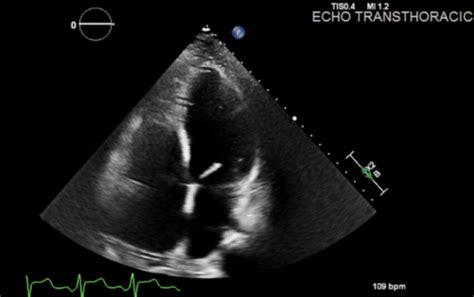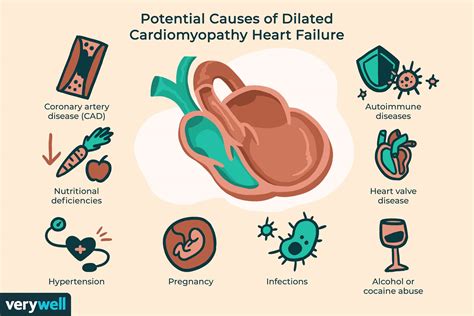lv dilatation | mildly dilated left ventricle symptoms lv dilatation Dilated cardiomyopathy (DCM) is characterized by dilation and impaired contraction of one or both ventricles [1-5]. Affected patients have impaired systolic function and .
1 talking about this. www.mennonitehistory.org We are a Mennonite Historical Society located in Calgary, .
0 · mildly dilated left ventricle symptoms
1 · left ventricle is severely dilated
2 · does dilated cardiomyopathy go away
3 · dilated cardiomyopathy signs and symptoms
4 · dilated Lv means
5 · causes of left ventricular dilation
6 · cardiomegaly with biventricular dilatation
7 · Lv dilatation definition
Alexander Graham Bell National Historic Site. Discover the spirit of innovation and creativity in the quaint village of Baddeck, Nova Scotia. Be inspired by the natural beauty .
Dilated cardiomyopathy causes your heart’s main pumping chamber to expand. This decreases its ability to pump blood out to your body, putting you at risk for heart failure. The condition affects .

The parasternal long axis and apical four-chamber views on transthoracic echocardiography are often the primary views used to gain both a qualitative and quantitative appreciation of left ventricular enlargement. . Tests to diagnose dilated cardiomyopathy include: Echocardiogram. This is the main test for diagnosing dilated cardiomyopathy. Sound waves produce images of the heart in motion. An echocardiogram . Dilated cardiomyopathy affects the heart's ventricles and atria, the lower and upper chambers of the heart. The American Heart Association explains dilated .Dilated cardiomyopathy, or DCM, is when the heart chambers enlarge and lose their ability to contract. It often starts in the left ventricle (bottom chamber). As the disease gets worse, it may .
Dilated cardiomyopathy (DCM) is characterized by dilation and impaired contraction of one or both ventricles [1-5]. Affected patients have impaired systolic function and . Dilated cardiomyopathy (DCM) is a heart condition in which the left ventricle weakens, stretches, and becomes larger, making it harder for the heart to pump effectively.
Dilated cardiomyopathy (DCM) is a heart muscle disease characterized by left ventricular or biventricular dilatation or systolic dysfunction without either pressure or volume . Dilated cardiomyopathy is conventionally defined as the presence of left ventricular or biventricular dilatation or systolic dysfunction in the absence of abnormal loading conditions .
Dilated cardiomyopathy is a type of heart muscle disease that causes the heart chambers (ventricles) to thin and stretch, growing larger. It typically starts in the heart's main pumping chamber (left ventricle).
Dilated cardiomyopathy causes your heart’s main pumping chamber to expand. This decreases its ability to pump blood out to your body, putting you at risk for heart failure. The condition affects each person differently. The parasternal long axis and apical four-chamber views on transthoracic echocardiography are often the primary views used to gain both a qualitative and quantitative appreciation of left ventricular enlargement. Features include 4: increased left ventricular internal end-diastolic diameter (LVIDd) Tests to diagnose dilated cardiomyopathy include: Echocardiogram. This is the main test for diagnosing dilated cardiomyopathy. Sound waves produce images of the heart in motion. An echocardiogram shows how blood moves in and out of the heart and heart valves. It can tell if the left ventricle is enlarged.
Dilated cardiomyopathy affects the heart's ventricles and atria, the lower and upper chambers of the heart. The American Heart Association explains dilated cardiomyopathy and the potential causes of dilated cardiomyopathy.Dilated cardiomyopathy, or DCM, is when the heart chambers enlarge and lose their ability to contract. It often starts in the left ventricle (bottom chamber). As the disease gets worse, it may spread to the right ventricle and to the atria (top chambers). Dilated cardiomyopathy (DCM) is characterized by dilation and impaired contraction of one or both ventricles [1-5]. Affected patients have impaired systolic function and may or may not develop overt heart failure (HF). Dilated cardiomyopathy (DCM) is a heart condition in which the left ventricle weakens, stretches, and becomes larger, making it harder for the heart to pump effectively.
Dilated cardiomyopathy (DCM) is a heart muscle disease characterized by left ventricular or biventricular dilatation or systolic dysfunction without either pressure or volume overload or coronary artery disease sufficient to explain the dysfunction. Dilated cardiomyopathy is conventionally defined as the presence of left ventricular or biventricular dilatation or systolic dysfunction in the absence of abnormal loading conditions (eg, primary valve disease) or significant coronary artery disease sufficient to . Dilated cardiomyopathy is a type of heart muscle disease that causes the heart chambers (ventricles) to thin and stretch, growing larger. It typically starts in the heart's main pumping chamber (left ventricle).Dilated cardiomyopathy causes your heart’s main pumping chamber to expand. This decreases its ability to pump blood out to your body, putting you at risk for heart failure. The condition affects each person differently.
The parasternal long axis and apical four-chamber views on transthoracic echocardiography are often the primary views used to gain both a qualitative and quantitative appreciation of left ventricular enlargement. Features include 4: increased left ventricular internal end-diastolic diameter (LVIDd) Tests to diagnose dilated cardiomyopathy include: Echocardiogram. This is the main test for diagnosing dilated cardiomyopathy. Sound waves produce images of the heart in motion. An echocardiogram shows how blood moves in and out of the heart and heart valves. It can tell if the left ventricle is enlarged.
Dilated cardiomyopathy affects the heart's ventricles and atria, the lower and upper chambers of the heart. The American Heart Association explains dilated cardiomyopathy and the potential causes of dilated cardiomyopathy.Dilated cardiomyopathy, or DCM, is when the heart chambers enlarge and lose their ability to contract. It often starts in the left ventricle (bottom chamber). As the disease gets worse, it may spread to the right ventricle and to the atria (top chambers). Dilated cardiomyopathy (DCM) is characterized by dilation and impaired contraction of one or both ventricles [1-5]. Affected patients have impaired systolic function and may or may not develop overt heart failure (HF). Dilated cardiomyopathy (DCM) is a heart condition in which the left ventricle weakens, stretches, and becomes larger, making it harder for the heart to pump effectively.

Dilated cardiomyopathy (DCM) is a heart muscle disease characterized by left ventricular or biventricular dilatation or systolic dysfunction without either pressure or volume overload or coronary artery disease sufficient to explain the dysfunction.
mildly dilated left ventricle symptoms

nike air thea maat 36

• Malt whisky See more
lv dilatation|mildly dilated left ventricle symptoms


























